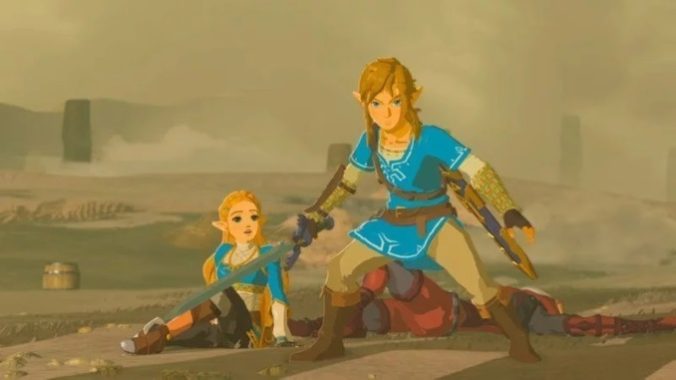Master Mode Made Me Fall In Love With Breath Of The Wild Again

For a long time, I admired The Legend of Zelda: Breath of the Wild more than I liked it. The structure of open world games maybe wasn’t as tired in 2017 as it is now, but it was already thoroughly established. Breath blew through the space, making every other wide world feel tame and small in comparison. Nevertheless, it did not subvert that core structure, so much as remix it. Link still climbs towers, crafts items, and grabs loot at enemy encampments. Breath of the Wild’s setting was ultimately just another open world for another self-important protagonist to control.
The shrines were the personification of this. They’re places in the world that only Link can access, where bespoke physics puzzles, separate from the rest of the world, can implausibly exist. The shrines have some thematic absurdity too. All around Hyrule Link encounters adventurers, villagers, and even an avian bard that long to discover the secrets of the shines. None of them will discover them, but they might help Link on his (more important) journey. All these folk songs and legends were passed down from generation to generation so that one important twink could find the right key for a lock.
I don’t exactly disagree with my past self, but I think Breath of the Wild is a more surprising and strange game than I gave it credit for back then. I’ve been replaying it, ahead of the sequel’s release, on Master Mode, an extra difficulty added in its first expansion. Master Mode’s changes are pretty simple. Enemies have increased health and heal themselves if you don’t continually damage them. Enemy locations have also been rearranged, with tougher foes appearing everywhere. Floating wooden forts also glide next to bridges, waterfalls, and towers, stocked with yet more enemies and the treasure they guard. All of the game’s puzzles and dungeons are unchanged, outside of the aforementioned shifts.
These might not seem like significant changes, especially compared to the redesigned dungeons of something like Ocarina of Time‘s Master Quest, but the simple increase of difficulty brings out the game’s scrambling puzzle solving and encourages you to use all of its quirks and tricks. For example, in the game’s tutorial area The Great Plateau, enemies that were once pushovers can now kill in one or two hits. Before I could get any of the scant effective weapons on the plateau, or any of the game’s stock abilities, I had to rely on stealth, either to evade or surprise enemies. Then, each new ability transformed the way I could deal with encampments or even the way I could move in the world.